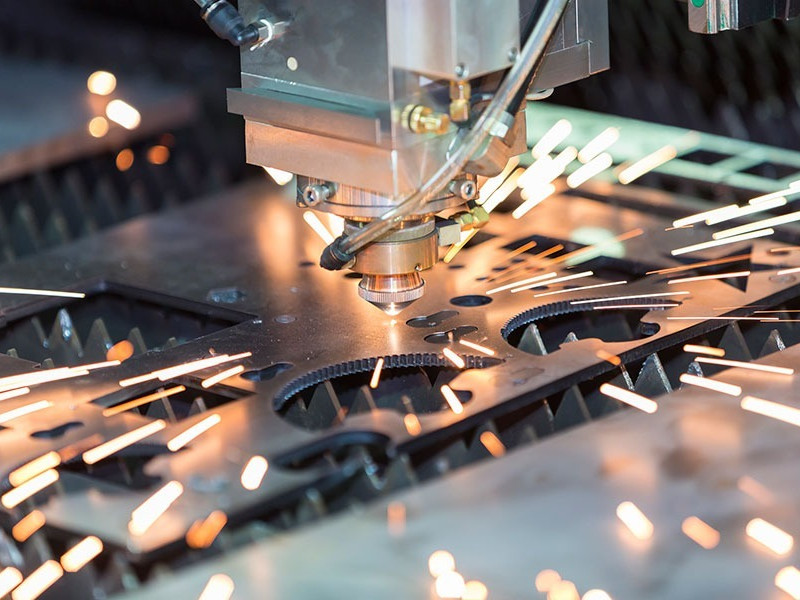
- English
- Español
- Português
- русский
- Français
- 日本語
- Deutsch
- tiếng Việt
- Italiano
- Nederlands
- ภาษาไทย
- Polski
- 한국어
- Svenska
- magyar
- Malay
- বাংলা ভাষার
- Dansk
- Suomi
- हिन्दी
- Pilipino
- Türkçe
- Gaeilge
- العربية
- Indonesia
- Norsk
- تمل
- český
- ελληνικά
- український
- Javanese
- فارسی
- தமிழ்
- తెలుగు
- नेपाली
- Burmese
- български
- ລາວ
- Latine
- Қазақша
- Euskal
- Azərbaycan
- Slovenský jazyk
- Македонски
- Lietuvos
- Eesti Keel
- Română
- Slovenski
- मराठी
- Srpski језик
Main Factors Affecting Laser Cutting Speed And Efficiency
2024-04-07
Laser cutting is the pinnacle of modern manufacturing precision, with a complex combination of factors determining its speed and efficiency. Delving deeper into the complexities of this change process reveals the comprehensive considerations that users must carefully consider. Here we explore the main factors that significantly affect laser cutting speed and efficiency.
Material Properties
- Material Type: The type of material being cut plays an important role in determining laser cutting speed and efficiency. Metals such as stainless steel, aluminum, and carbon steel have different thermal conductivities, melting points, and reflectivities that affect their response to laser cutting.
- Thickness: Material thickness directly affects cutting speed and efficiency. Thicker materials require more energy and time to cut than thinner materials. In order to obtain the best results on different thicknesses, the laser power, focal length and cutting speed need to be adjusted.
- Surface condition: Surface irregularities, such as rust, oxidation or coating, can affect laser cutting quality and speed. In order to cut effectively, the material surface may need to be prepared by cleaning or surface treatment.
Laser Parameters
- Power Density: Laser power density is determined by the power of the laser beam focused on a given area, directly affecting cutting speed and efficiency. Higher power density allows for faster cutting speeds, but requires careful calibration to prevent material damage.
- Beam quality: The quality of the laser beam, including factors such as divergence, mode and wavelength, will affect cutting accuracy and efficiency. The high-quality beam ensures even energy distribution, resulting in cleaner cuts and increased efficiency.
- Focal length: The focal length of the laser lens determines the spot size and focal depth. Optimal focus selection ensures precise delivery of energy to the cutting surface, maximizing efficiency without compromising quality.
Cutting Conditions
- Cutting speed: The rate at which the laser beam passes through the material surface significantly affects cutting efficiency. Finding the right balance between cutting speed and power can help achieve the desired results and minimize processing time.
- Auxiliary gas selection: Auxiliary gases such as oxygen, nitrogen, or compressed air aid in material removal and cooling during laser cutting. The choice of assist gas depends on the material type, thickness and required edge quality, with different gases providing different levels of cutting efficiency and cleanliness.
- Nozzle Design and Alignment: Proper nozzle design and alignment helps direct secondary airflow and maintain optimal separation distances. Improper alignment or worn nozzles can result in reduced cutting efficiency and quality.
Machine Factors
- Laser system configuration: The design and functionality of the laser cutting machine, including the beam delivery system, motion control and automation features, affect cutting speed and efficiency. Advances in modern laser technology have increased processing speed and accuracy.
- Maintenance and Calibration: Regular maintenance, alignment, and calibration of laser cutting machine help ensure consistent performance and extend machine life. Neglecting maintenance can result in reduced cutting efficiency, increased downtime, and expensive repairs.
Environmental Factor
- Temperature and Humidity: Ambient temperature and humidity levels can affect laser cutting performance. Extreme temperatures or high humidity can cause material deformation or interfere with laser beam propagation, affecting cut speed and quality.
- Air Quality: The presence of contaminants in the air, such as dust or particles, may interfere with laser cutting operations. Keeping the air in your cutting environment clean helps prevent nozzle clogging and ensures consistent cutting efficiency.
Design Considerations
- Geometric Complexity: Complex designs with sharp corners, small features, or tight tolerances may require slower cutting speeds to maintain accuracy and edge quality. Advanced CAD software can optimize cutting paths for complex geometries, increasing overall efficiency.
- Marking Optimization: Effective utilization of materials through marker optimization software can minimize material waste and reduce cutting time, ultimately improving overall process efficiency. Nesting algorithms arrange parts in the most space-efficient manner, maximizing material utilization.
- Edge finish requirements: The required edge quality, whether smooth, rough or burr-free, affects cutting parameters and speed. Adjustments may be required to meet specific surface finish standards to ensure the final product meets quality standards.
In the complex laser cutting process, manufacturers must carefully consider and balance these factors to unlock the full potential of this advanced technology. A detailed understanding of material interactions, laser dynamics, cutting conditions, machine configurations, environmental impacts and design complexities can help achieve optimal laser cutting speed and efficiency in modern manufacturing.




